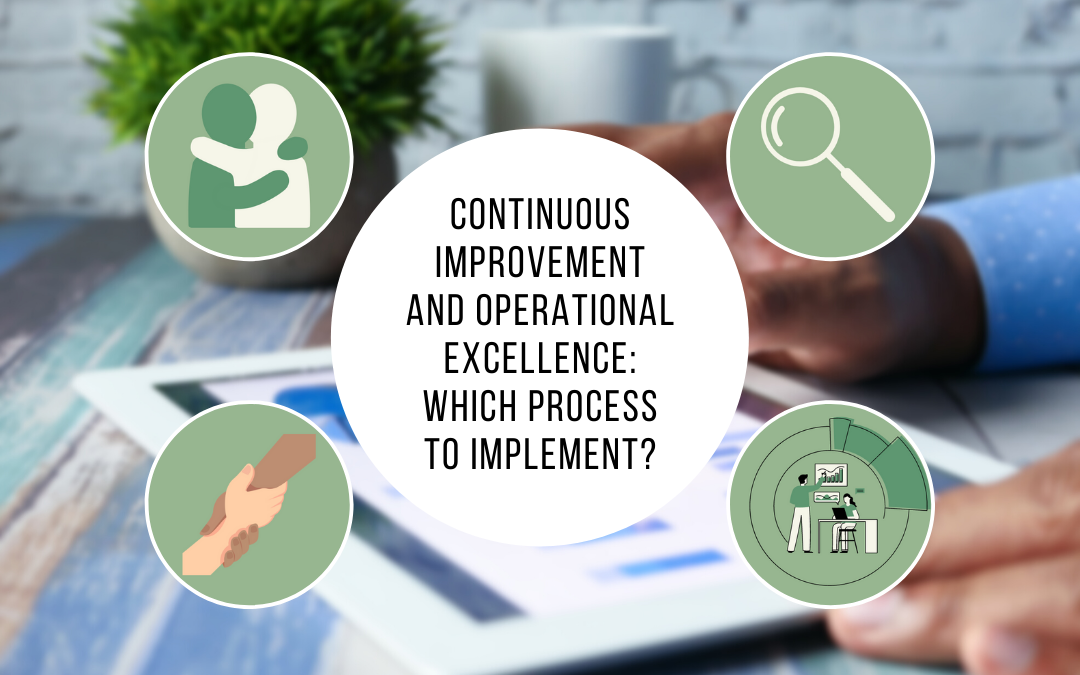Now, no one dares to question the major interests of operational excellence. For a company, it is essential for a better control of the costs and makes it possible to avoid the waste related to the production. However, it is much more difficult to identify the processes that should be implemented as a priority. Here are some ideas that might help you think about this subject!
A human system above all!
Operational performance is based above all on simple and human principles. In no case should the search for excellence be focused exclusively on methods, processes or the organization itself. You can define the best possible work system, but it will be useless if it is not driven by the employees and managers on the ground. If this is not the case (or if important connections are missing between the different points), you will not be able to achieve the operational excellence you are looking for. To better understand one of these principles, it is sufficient to use an analogy between the different stages of these methods and the human body. Defining a strategy would then be the equivalent of using one’s eyes to get a vision of the path to follow to reach the desired goal. The staff and management would be equated with the heart, because of their ability to feed the whole body. The managers in charge of decision-making and the proper transmission of information are linked to the central nervous system. Two competencies essential to this operational policy would symbolize the legs: innovation and improvement capabilities. The arms would be represented by concrete elements, such as production processes and different internal methodologies.

Seek support from leaders
Don’t expect to achieve productivity performance without strong support from the company’s leadership! This research must clearly be part of the company’s DNA and shared by all employees. Field staff must also integrate it into their daily work. Leaders will need to apply it to better lead their teams and get the most out of them in a caring way. Before implementing the first steps (problem analysis, strategy definition, skills search, definition of the best indicators for steering, Lean and Six Sigma methods, etc.), it is essential to ensure the full support of the women and men who make up the organisation. Without this support, your policy will simply fail. Keep in mind that a process becomes fully useful and effective when its users understand its benefits. The latter will be able to make proposals to improve them in the future. You will not be able to achieve this result if the process has been imposed by the hierarchy.A tool to reach
operational excellence at work?
Clearly identify processes
Before you can achieve full team engagement, you’ll need to identify and define all of your processes. The performance of each of them in improving productivity must also be assessed. The scope of this work is broad and well-defined. You will be interested in the SIPOC which stands for Supplier, Input, Process, Output, Customer. Each process must be documented in a standardized manner based on several executions with as little variation as possible. You should also not forget to list all the criteria necessary for decision making and the various operations of steering the activity. Each will be clearly defined and quantified to avoid many problems later. You will also detail the scheme (and all the steps) leading to the final choice.

Both standard and flexible
Once this list has been drawn up, each reference should be analysed under the prism ofoperational excellence (lean management or Six Sigma for example). Some of the processes can then be described as “standard” and others as “flexible”. Please note that this classification should not be fixed. Indeed, it is not uncommon for a company to change its strategy and its vision of the future under the influence of multiple and varied parameters, thus forcing itself to implement a new environment.
To reduce the risk of frequent change, experts agree that it is best not to try to define all existing processes. By doing so, you would be exposing yourself to rules that are far too complex and difficult to maintain over the long term. On the contrary, your objective should be to detail all the processes that cover at least 80% of the company’s activity. Beware, such a principle cannot be applied in all circumstances! Some companies need more precision because of their high-volume production, their high rate of non-quality or the importance of security risk.
You will also need to be careful about processes that are very similar. Your organization may be based on different production sites or on several national or regional offices. In this case, it would make sense to focus on standardizing the processes without trying to make the model more complex. However, it is still preferable to take the time to integrate a slight level of customization in order to take into account all the specificities of each local context. The process will be easier to assimilate by all teams, while costs and waste will be further reduced.
